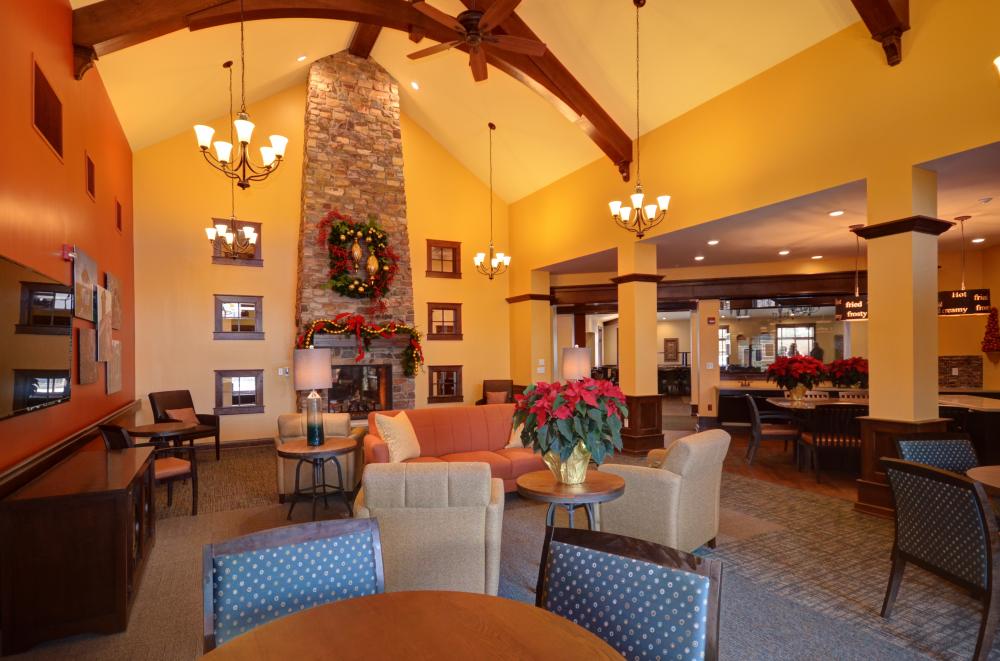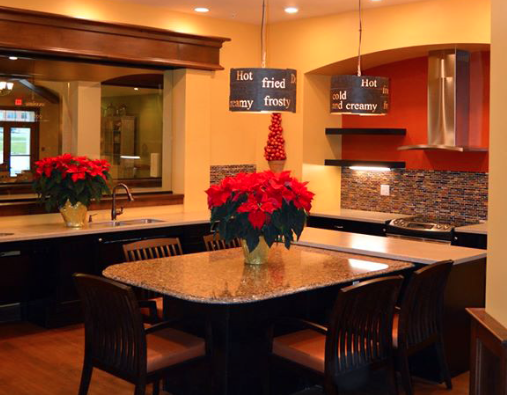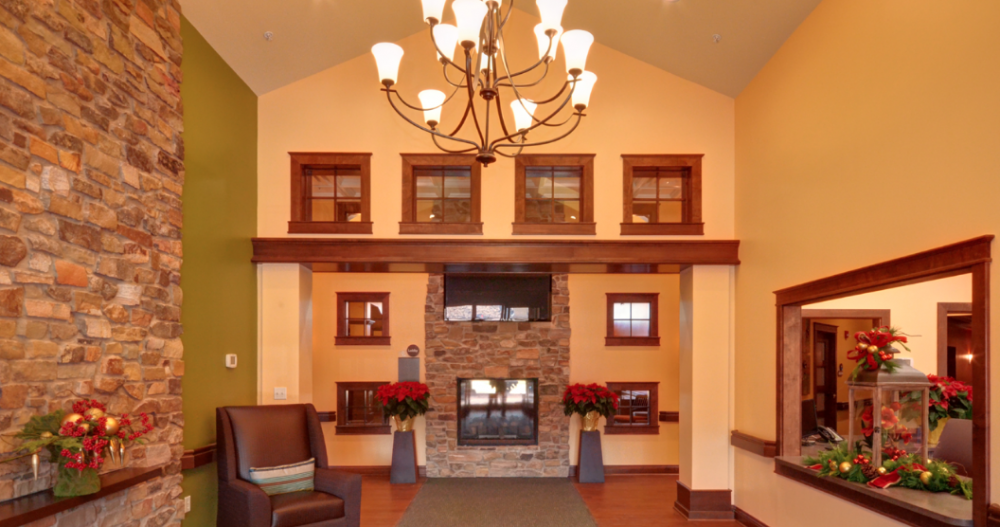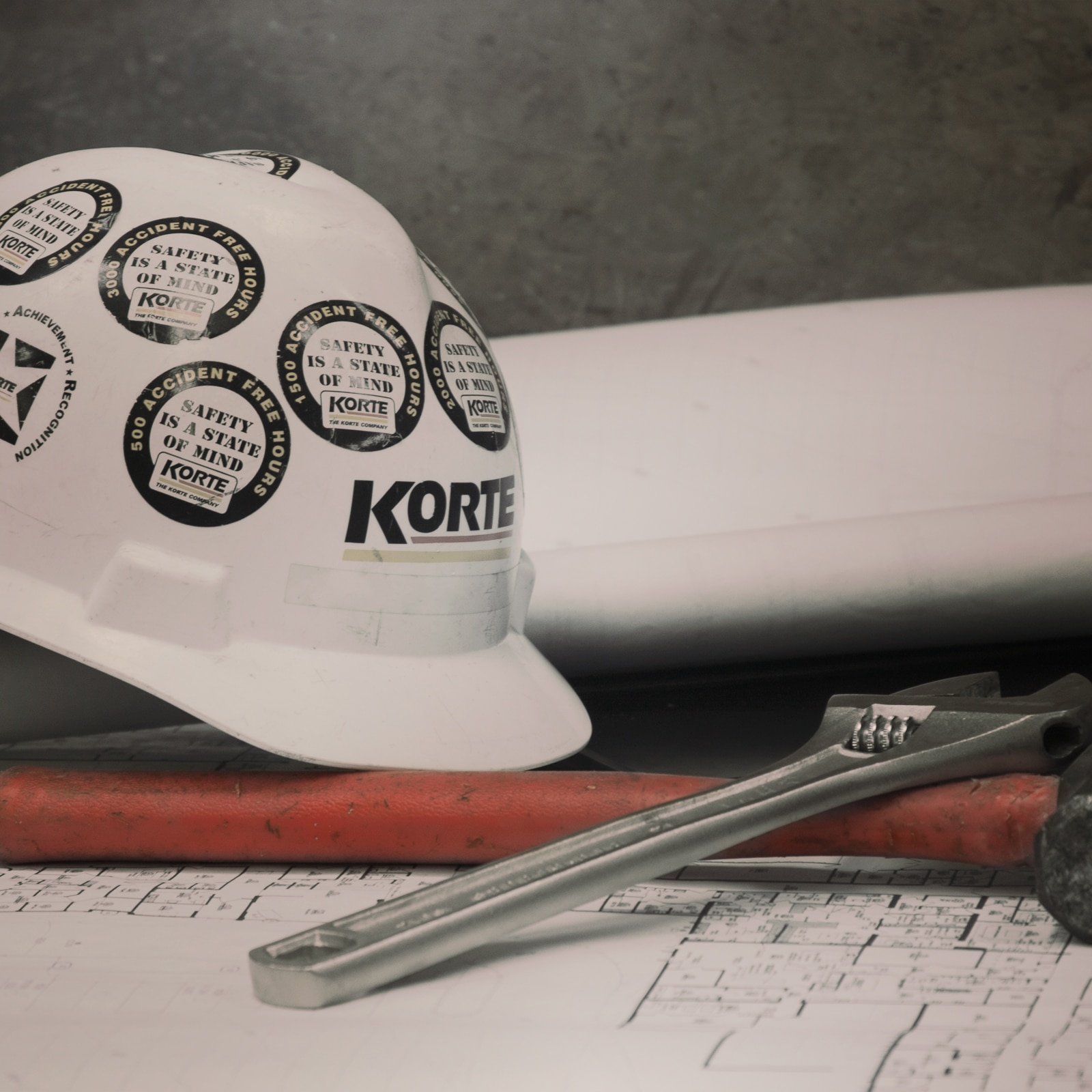
Today, as nursing home design moves toward the dual-purpose model of efficient care and quality lifestyle, good facilities incorporate the best interior design elements of hospitals, hotels and homes. And they’re set up to be as friendly as possible to those who have disabilities.
Incorporating the privacy of the home into senior living interior design
To improve senior living interior design, you can use elements of the traditional home, the biggest of which is privacy. As seniors progress from living on their own to receiving daily care in a nursing home, they still expect dignity and personal space. Today, facilities are increasingly providing private rooms to seniors, along with private bathrooms that feature individual showers or baths. It’s become a priority to create living spaces that make it possible for seniors to invite their family members to visit. That includes individual spaces for games, entertainment and fun. To help create more privacy and personalization, some facilities go as far as providing house-like units with smaller numbers of residents and accessible patios, porches and sitting areas where people can enjoy the day together. These units sometimes include gas fireplaces, usable washing machines and dryers for visiting families.
Instead of a single, large dining area for all residents, facilities are transitioning to smaller, more private dining areas and open kitchens that are accessible to residents. The design of dining and kitchen areas has become increasingly important.
Interior designers are creating senior living facilities with comforting lighting, walls designed with inviting colors, themed and comfortable furniture and custom decorations. A true home.

Incorporating the best of hotels in senior living interior design
Nursing home facilities that have long been associated with sterile environments are now being designed to create a first impression like a hotel. In many facilities, nursing stations have been transformed from a desk behind high walls to a concierge-like station. It’s a place that encourages interaction between care providers and residents. Mini nursing stations with medical supplies are present at desks, shelves and wall cabinets throughout facilities to make it easier for staff to deliver more personal care and service. Maintenance and housekeeping duties are functionally designed to be separate from residents in order to create a more visually appealing home.
Senior living facilities now incorporate welcoming design into walls, flooring, furniture and outdoor areas in ways that had previously been unachievable. In the past, one of the limiting factors for design had been state regulations for cleanliness and infection control. After all, nursing homes are state-licensed facilities. But today, organizations like the Centers for Medicaid and Medicare Services have worked with regulators to create standards that incorporate personalization and call for a high quality of life. At the same time, new technologies and materials have allowed for a clean, healthy environment without limiting design capabilities. And many of these innovations have come directly from hotels.
One example of a new material is solution-dyed carpets with moisture backings. They’re visually pleasing, meet regulations and can stand up to industrial–strength cleaners necessary for infection control. Other materials, such as new types of vinyl, painted gypsum boards and wall coverings, offer the same benefits. Furniture lines, created specially for those who need assistance, come with removable elements, chair arms designed for lifting assistance and other features that make life easier for the elderly and caregivers. Part of senior living design is simply keeping seniors in mind in each detail.
But beyond the details of design, some the finest facilities offer amenities like hotel-style dining areas, pools, fitness centers, spas, libraries, computer centers, wellness facilities, business centers, art studios — even beauty salons and barbershops. Seniors are able to stay active and fit longer while enjoying a better daily experience.

Incorporating the best of hospitals in senior living interior design
In recent years, hospitals have seen many important developments and improvements in technology and interior design. Some of those positives translate directly to senior living. New technology that’s custom-made for care settings is improving staff communication and care throughout many facilities. Automated tracking and alerts can inform nurses and care providers when patients fall, require attendance or enter or exit certain areas. Nursing stations now come equipped with the latest computing technology, and facilities are set up to work with modern medical devices and IT infrastructures. In many new nursing homes, automated lifts come built into the facility and make it easier for care providers to move residents from room to room and up stairs.
Accommodations for medical care technology work in coordination with evidence-based design. Research study after research study has shown that environments with nurturing colors, green spaces and inviting decorations have a positive impact on patient outcomes and care. Using evidence-based design and the best practices of modern nursing home architecture design, your design team can create an environment that tangibly improves the quality of life for your residents.
Learn the latest trends in senior living interior design, architecture and construction
This article is an excerpt taken from The Owner’s Guide to Senior Living Construction and Design. In this complete guide, we introduce you to the latest trends in senior living interior design, architecture and construction. And we show you what they mean for your facility and construction program. To download our guide, fill out the form below.
